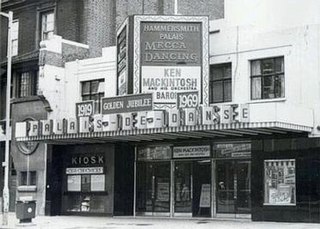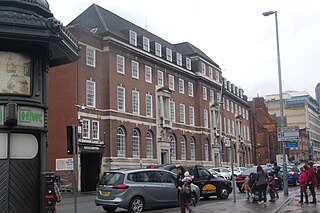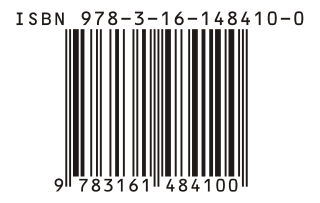
Paul Samuel Whiteman was an American bandleader, composer, orchestral director, and violist.
Acid jazz, also known as club jazz, is a music genre that combines elements of jazz, soul, funk, and disco. Acid jazz originated in the London club scene of the mid-1980s in the rare groove movement and spread to the US, Japan, Eastern Europe, and Brazil. Major acts included the Brand New Heavies, Incognito, Us3, and Jamiroquai from the UK and Buckshot LeFonque and Digable Planets from the US. The rise of electronic club music in the mid to late 1990s led to a decline in interest, and in the twenty-first century, the movement became indistinct as a genre. Many acts that might have been defined as acid jazz are now seen as jazz-funk, neo soul, or jazz rap.

Albert Edwin Condon was an American jazz banjoist, guitarist, and bandleader. A leading figure in Chicago jazz, he also played piano and sang.
Discography is the study and cataloging of published sound recordings, often by specified artists or within identified musical genres. The exact information included varies depending on the type and scope of the discography, but a discography entry for a specific recording will often list such details as the names of the artists involved, the time and place of the recording, the title of the piece performed, release dates, chart positions, and sales figures.

John Arthur "Jaki" Byard was an American jazz multi-instrumentalist, composer and arranger. Mainly a pianist, he also played tenor and alto saxophones, among several other instruments. He was known for his eclectic style, incorporating everything from ragtime and stride to free jazz.

The O2 Institute (originally known as the Digbeth Institute) is a music venue located in Birmingham, England. The venue opened in 1908 as a mission of Carrs Lane Congregational Church. It has also served as an event centre, civic building and nightclub.

The Roseland Ballroom was a multipurpose hall, in a converted ice skating rink, with a colorful ballroom dancing pedigree, in New York City's theater district, on West 52nd Street in Manhattan.
The California Ramblers were an American jazz group that recorded hundreds of songs for many different record labels throughout the 1920s. Four members of the band – Red Nichols, Jimmy Dorsey, Tommy Dorsey, and Adrian Rollini – went on to front big bands in later decades.
Shelley's Laserdome was a night club in Longton, Stoke-on-Trent, Staffordshire, England. It was at the heart of the house and rave scene of the late 1980s and early 1990s too, helping to launch the career of DJ Sasha and featuring regular appearances from Carl Cox. It was eventually shut down by Staffordshire Police.
The Sunset Cafe, also known as The Grand Terrace Cafe, was a jazz club in Chicago, Illinois operating during the 1920s, 1930s and 1940s. It was one of the most important jazz clubs in America, especially during the period between 1917 and 1928 when Chicago became a creative capital of jazz innovation and again during the emergence of bebop in the early 1940s. From its inception, the club was a rarity as a haven from segregation, since the Sunset Cafe was an integrated or "Black and Tan" club where African Americans, along with other ethnicities, could mingle freely with white Americans without much fear of reprisal. Many important musicians developed their careers at the Sunset/Grand Terrace Cafe.
John Wesley Vivian "Jack" Payne was a British dance music bandleader who established his reputation during the British dance band era of the 1930s.

Woodbrooke Study Centre is a Quaker college in Selly Oak, Birmingham, England.

The Hammersmith Palais de Danse, in its last years simply named Hammersmith Palais, was a dance hall and entertainment venue in Hammersmith, London, England that operated from 1919 until 2007. It was the first palais de danse to be built in Britain. In 2009, it was named by the Brecon Jazz Festival as one of twelve venues which had made the most important contributions to jazz music in the United Kingdom.
William John "Bill" Harty (1899-1959) was an Irish born jazz drummer.
The Southern Rag-a-Jazz Orchestra was an early jazz band that formed in Lincoln, Nebraska by six students at the University of Nebraska, and played for a while at the Fontonelle Hotel in Omaha.
Kelly’s Stables, also referred to as Kelly’s Stable, was a jazz club on Manhattan's 52nd Street in New York City, opened by jazz band leader Bert Kelly.
Birmingham's culture of popular music first developed in the mid-1950s. By the early 1960s the city's music scene had emerged as one of the largest and most vibrant in the country; a "seething cauldron of musical activity", with over 500 bands constantly exchanging members and performing regularly across a well-developed network of venues and promoters. By 1963 the city's music was also already becoming recognised for what would become its defining characteristic: the refusal of its musicians to conform to any single style or genre. Birmingham's tradition of combining a highly collaborative culture with an open acceptance of individualism and experimentation dates back as far back as the 18th century, and musically this has expressed itself in the wide variety of music produced within the city, often by closely related groups of musicians, from the "rampant eclecticism" of the Brum beat era, to the city's "infamously fragmented" post-punk scene, to the "astonishing range" of distinctive and radical electronic music produced in the city from the 1980s to the early 21st century.

Steelhouse Lane police station is a former police station in central Birmingham, England. It was built for the Birmingham City Police and opened in 1933 as their Central Police Station, replacing a Victorian station on the same site. It was used by their successor, the West Midlands Police, until 2017. The carvings over the entrances, including the coat of arms of Birmingham, are by the local sculptor William Bloye.
The Famous Door was a jazz club on New York's 52nd Street. It opened in 1935 and was one of the major clubs on the street, hosting leading jazz musicians until 1950, through changes of location and periods of closure.














